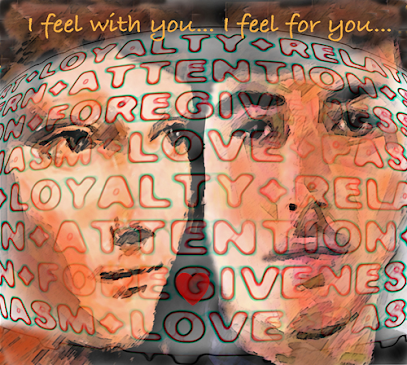Dangerous things
In the aftermath of bleak northern winters, summer in my city traditionally heralds a season of conviviality and collective celebration. However, on a particularly sultry July night, as my young adult children hosted a gathering in the apartment above mine, the clamor of revelry filled me with an inexplicable dread, rooted in a family history of precariousness and loss. The sudden, urgent call of my daughter for my son propelled me upstairs, where I found him spectral and unsteady, stumbling toward the balcony. His anguished assertion—“You don’t even know me!”—preceded a harrowing leap, and in that moment, my heart plummeted with him toward the pavement below, my own cry echoing his name in the void.
This moment of crisis finds a poignant analogy in the life cycle of the red-eyed tree frog, whose existence begins with a dramatic, perilous fall from leaf to water. Evolutionarily adapted to withstand such a descent, these tadpoles transform into resilient adults, provided they escape predation. The precarity of my son’s life, however, was not merely a matter of biological chance but also a consequence of our shared history. Born during the renovation of a ramshackle farmhouse on a wooded incline, his early years were shaped by both natural beauty and latent danger—railway tracks threading the valley, the presence of predators, and the ever-present specter of violence, both natural and human.
The period surrounding his birth was marked by hope and preparation—a verdant nursery, a productive garden, and the anticipation of a natural delivery. Yet, complications necessitated an emergency cesarean and, in the aftermath, I found myself physically and emotionally vulnerable, my faith in my own body fractured. The subsequent weeks were overshadowed by a sense of pervasive threat, as news of a nearby double homicide and the specter of a serial killer cast a pall over our fragile sense of security. Despite these challenges, I sought to provide my son with solace and stability, drawing comfort from the rhythms of nature—the fragrance of lilacs, the chorus of frogs and trains, and the gentle caress of the spring breeze.
My own childhood, marred by unpredictability and violence, had instilled in me a hypervigilance that persisted into motherhood. The dissolution of my marriage and our relocation to a small town did little to assuage my anxieties, but my son’s burgeoning fascination with frogs became a source of unexpected joy and connection. His empathy for these creatures, his willingness to confront injustice on their behalf, and his voracious curiosity about their life cycles and conservation needs reflected a deep sensitivity and resilience. Yet, despite my best efforts to protect him, he faced bullying, betrayal, and loss, his fearlessness in the face of adversity both admirable and heartbreaking.
The culmination of these trials occurred one July night, when my son, overwhelmed by the cumulative weight of grief and trauma, attempted to end his life. Miraculously, he survived the fall, emerging bloodied and disoriented but alive. In the aftermath, we both confronted the necessity of emotional numbness as a survival strategy—a phenomenon echoed in the cryogenic stasis of certain northern frogs. Seeking renewal, we journeyed to Costa Rica to meet Henry Pizarro Espinoza, a conservationist who had transformed deforested land into a sanctuary for red-eyed tree frogs. Immersed in the nocturnal symphony of the rainforest, we encountered a world teeming with life and danger, where every creature, no matter how perilous, was accorded respect and space. My son’s quiet reflection on the restoration efforts—“There was nothing here, but Henry planted the right things, and the insects and the animals returned. Birds, frogs, mammals. Gives me hope”—spoke to the possibility of renewal and transformation, and to the enduring power of love as our only true compass.
WORDS TO BE NTOED-
-
Conviviality – Warm, friendly, and lively atmosphere; sociability.
-
Precariousness – The state of being uncertain or unstable; vulnerability.
-
Pall – A dark cloud or atmosphere of gloom or fear.
-
Hypervigilance – An enhanced state of sensory sensitivity and alertness, often due to trauma or anxiety.
-
Voracious – Having a very eager approach to an activity or pursuit; insatiable.
-
Adversity – Difficulties or misfortune; hardship.
-
Cryogenic – Relating to very low temperatures; in this context, a metaphor for suspended animation or numbness.
-
Sanctuary – A place of refuge or safety; in this passage, a protected area for wildlife.
-
Restoration – The act of returning something to its original or improved condition.
-
Compass – A guiding principle or direction; here, a metaphor for love as a guide through life.
The story begins with the narrator feeling uneasy at a noisy party, which brings up bad memories and family worries. When her son suddenly tries to jump off a balcony, she is filled with fear and shock. She compares his life to a red-eyed tree frog, which survives a dangerous fall as a tadpole—but her son’s struggles are not just from nature, but also from a difficult family past and a childhood surrounded by both beauty and risk. The narrator remembers her own tough childhood and how hard she tried to protect her son, who found comfort in learning about frogs and nature. Despite her efforts, he still faced bullying and sadness. One summer night, overwhelmed by pain, he tries to end his life but survives. After this, the narrator and her son travel to Costa Rica to meet a conservationist who helps frogs, and this gives them hope for healing and a new start. The story ends with the message that love and hope can help us recover from even the worst hardships.
SOURCE- PSYCHE
WORDS COUNT- 550
F.K SCORE - 14.5




Comments
Post a Comment